Roses, Rosa spp., are perennial flowering plants suited to cultivation in USDA Hardiness Zones 3 to 11. They thrive in organically-rich loam with a slightly acidic pH of 6.0 to 6.5 in a full sun to part shade location.
If you’re standing, shears in hand, shaking your head at a tangled mass of roses, you’ve come to the right place.
While they can be daunting at first, once you get the upper hand with proper pruning techniques, roses are sure to become one of your favorite flowers.

We link to vendors to help you find relevant products. If you buy from one of our links, we may earn a commission.
Let me tell you about mine.
Years ago, I moved and acquired an enormous Knock Out® shrub rose that a previous owner had planted.
This type is often used commercially, and I wasn’t thrilled at first, because it’s non-native and doesn’t attract local pollinators.
It was a dense thicket of branches over five feet tall and equally wide, and being only a little over five feet myself, it was a force to be reckoned with.
I plunged in, literally, up to my ears in branches, with thorns pricking my sweater. Soon I had an airy, three-foot shrub with gracefully tapered branches that is virtually trouble-free, and blooms three times between spring and the first frost.
The first time I saw the sparrows sitting in it waiting for their turns in the birdbath, I knew this was a plant I could love.
In our guide to growing roses, you’ll find all you need to know to grow and care for a variety of species.
This article zeroes in on a key component of rose care – pruning.
Here’s what we’ll cover:
What You’ll Learn
What’s Your Style?
Do you have a garden rose that blooms prolifically throughout the summer? A potted miniature on your kitchen windowsill that blooms each spring?

Even if you don’t know the names of your plants, once you get acquainted with their growth habits, you’ll understand how to take care of them.
The best time to see the “bones” of your plants is when they’re dormant in the winter. Alternatively, you may strip some leaves from their lowest branches to get an idea of what you’re dealing with.
Roses grow in one of the following ways:
- Creeping ground cover
- Garden bush
- Horizontal rambler
- Miniature
- Shrub
- Tree
- Vertical climber
Tree roses are also called “rose standards.” They may be a bush type that has been cultivated to have one long stem with a bushy “treetop,” or a bush, climber, or rambler that has been grafted onto long-stemmed rootstock.
In addition to a characteristic growth pattern, each plant has one of three bloom styles:
- Everblooming
- Once-blooming
- Repeat blooming
The everblooming kind produces blossoms throughout a growing season.
The once-blooming type bursts forth, usually in spring, and is finished for the year.
The repeat bloomer puts forth blossoms several times during a season, like my shrub rose (and if you’re a fan of the Knock Out®, both shrubs and trees are available from Nature Hills Nursery).
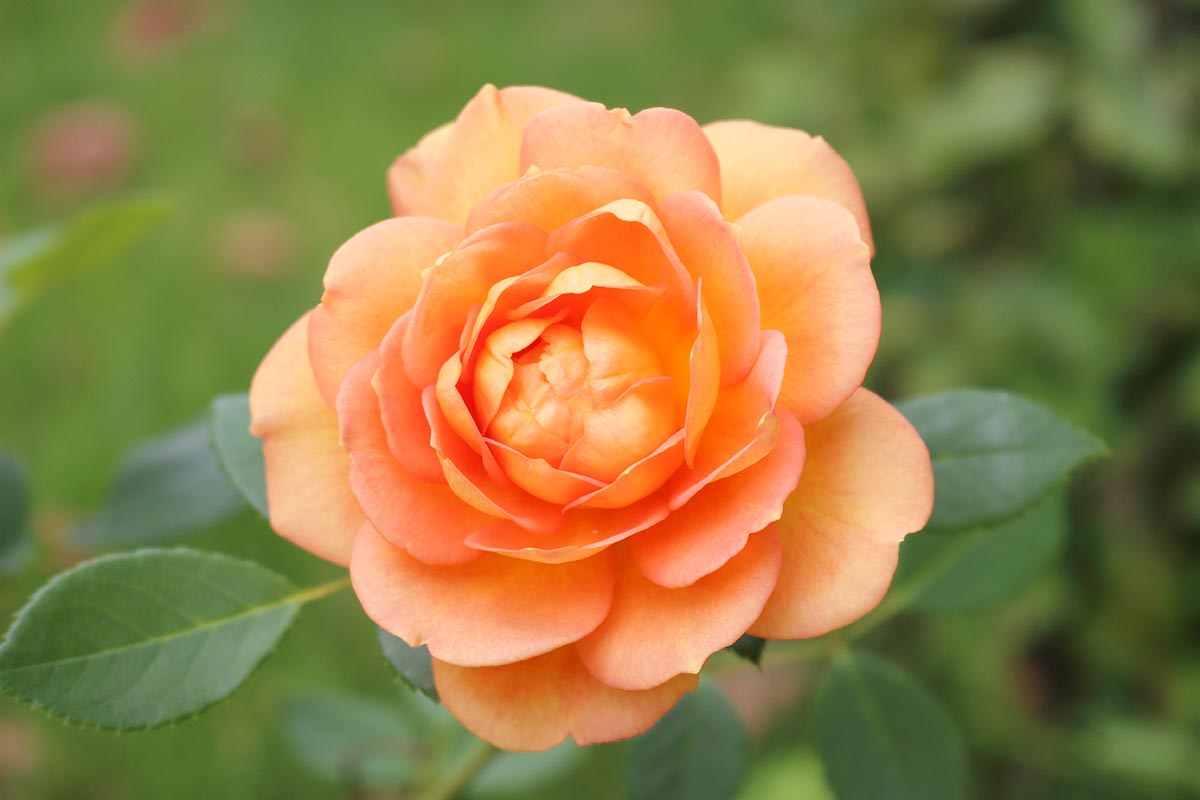
That’s the easy part. From here, it can get as complicated as you like, from straight species to modern hybrids, and a culture that includes classifications, societies of aficionados, and international competitions.
For our purposes, suffice it to say that roses require attention with shears at some point, regardless of their size, shape, class, or bloom pattern.
Why Prune Roses?
We cut canes for two main reasons: aesthetics and good health.
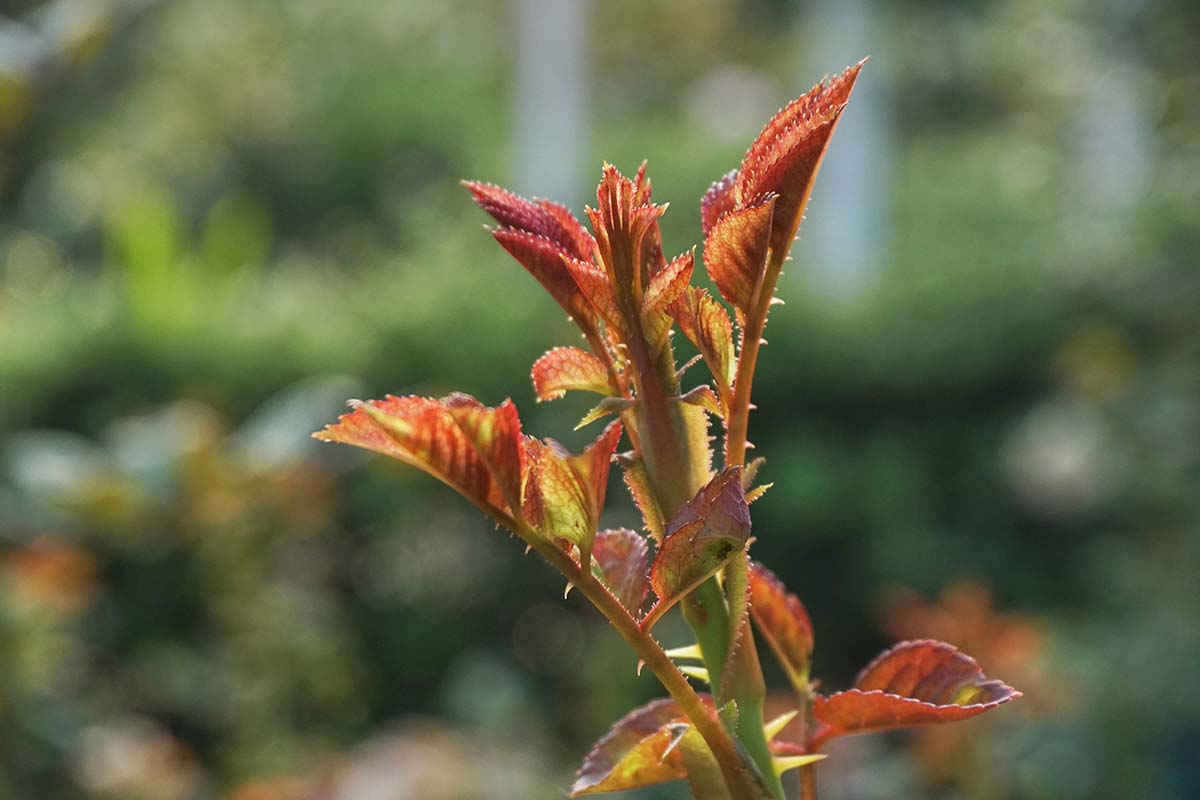
A garden bush type, like a hybrid tea or floribunda, may be pruned deeply to produce fewer leaves and stems, and more flowers. A shrub rose may be reduced by one-fourth each year, to keep it manageable.
And climbers and ramblers may be trimmed lightly to redirect wayward canes.
Did you know that plants that are well groomed are more likely to be healthy?
When we see a spotted leaf or damaged cane, we can remove it and slow down – or even halt – the spread of a fungal disease like black spot, or an infestation by a cane boring beetle.
With the goals of health and beauty for motivation, it’s time to get your supplies ready.
Gearing Up for the Task
The first thing I learned when I dove into my prickly shrub was not to wear a sweater!
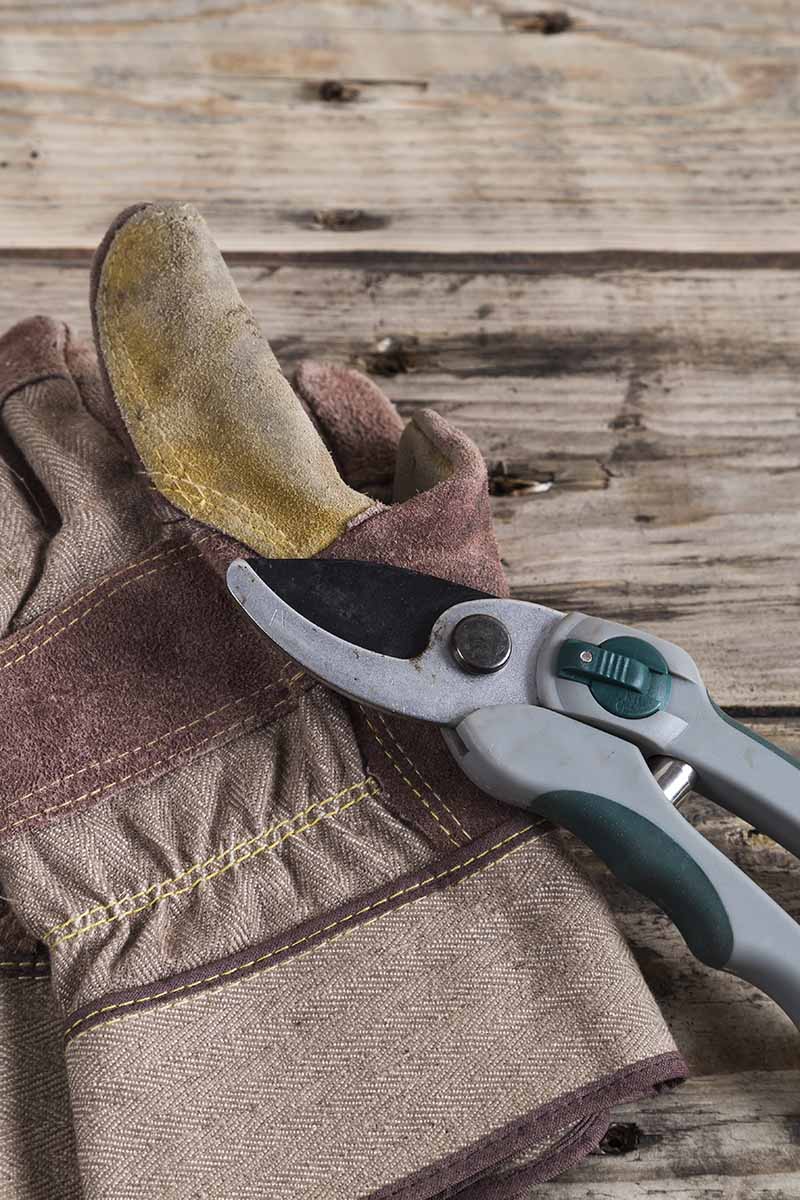
I recommend the following gear for a safe and successful session among the thorns:
- Brimmed cap
- Protective eyewear
- Tightly woven shirt or denim jacket
- Gauntlet gloves
- Long-handled loppers
- Pruning shears
- Pruning saw
I also like to bring a cardboard box, paper bag, or plastic bin with me for collecting clippings, since plastic snags and can be difficult to work with.
Now that you know about rose behavior and you’re safely suited up and prepared with the correct tools and supplies, here are five of our top tips to make you a pruning pro in no time.
5 Pruning Tips
There are probably as many growers of roses as there are opinions on how to care for them.

However, most would agree that the following five tips are applicable across the rose spectrum.
1. Cut at a 45° Angle in the Right Location
It’s advantageous to cut branches at a 45-degree angle under all circumstances, whether pruning, deadheading, or cutting for a bouquet.
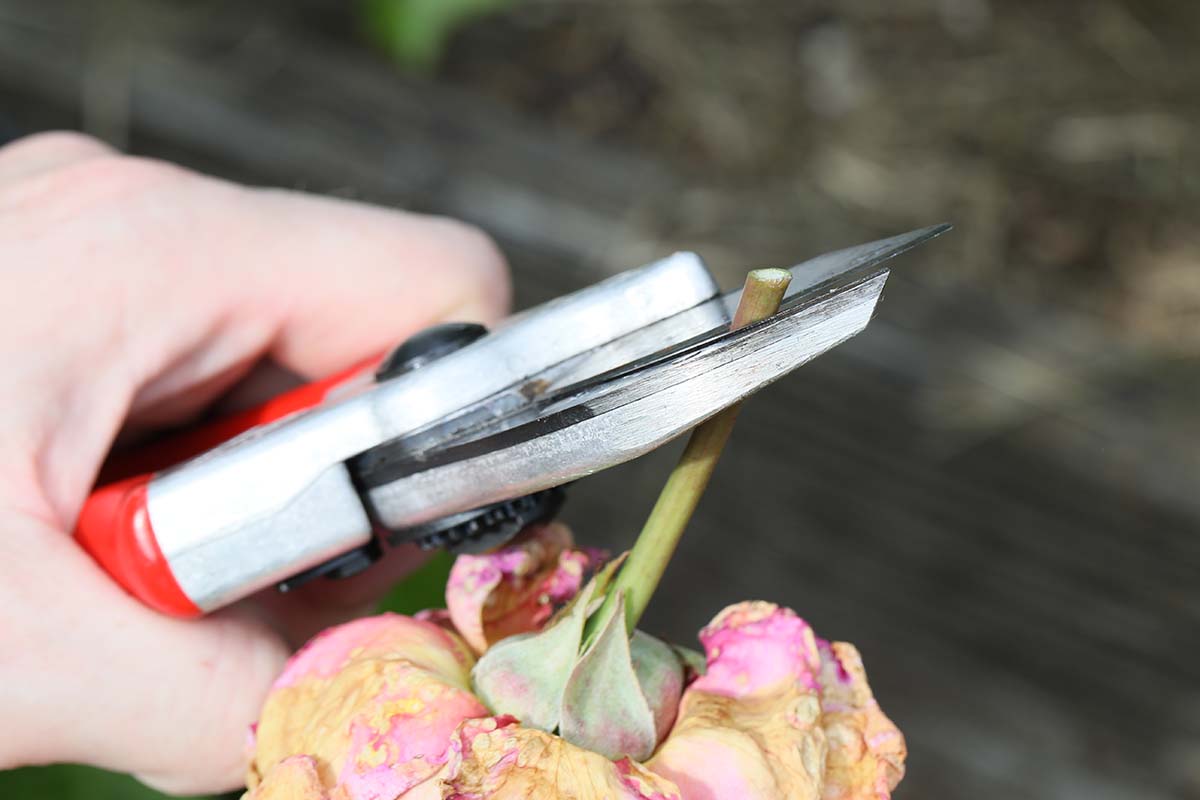
When you choose a branch to cut, try to locate a bud eye facing outward from the plant’s center. This is easy to do with garden bushes and shrubs.
A bud eye, or latent bud, is a bump on a dormant branch that will sprout in spring. Cut about a quarter-inch above an outward-facing eye, on a 45-degree angle that points outward over the bud as if it were shielding it.
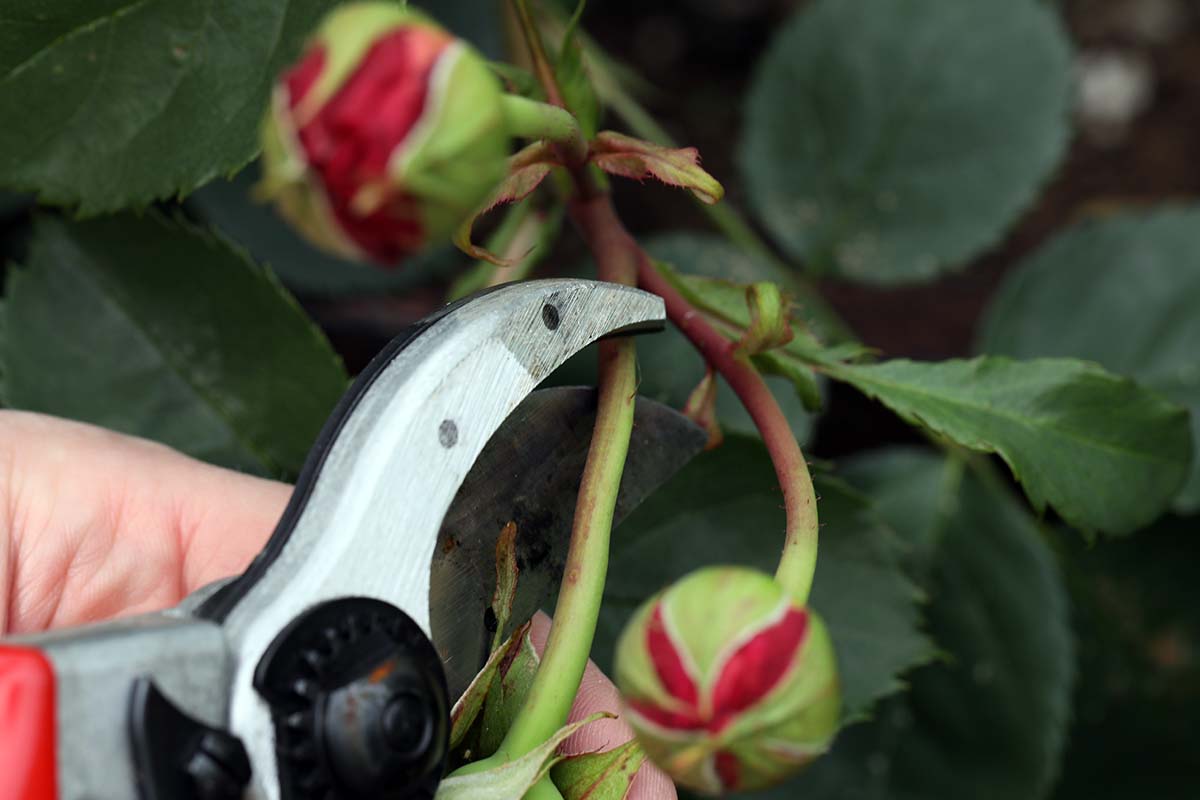
If you’re pruning during the growing season, locate a mature leaflet of five to seven leaves that faces out from the plant’s center. Make a clean cut at a 45-degree angle about a quarter-inch above the leaflet, again, as though it were shielding it.
The rationale behind the angle and outward slant is that it encourages outward growth and keeps the middle of the plant open for air circulation. It also enables rainwater to run down behind a bud eye instead of over it, to avoid moisture buildup.
2. Keep the Center Airy
As I noted earlier, air circulation is important to prevent moisture buildup, which may make a plant susceptible to fungal disease or insect infestation.

The more air that reaches the center of a plant, the better. So, in addition to outward, angled cutting, you want to declutter the center of your plants as much as possible.
This means removing dead canes and twigs, as well as canes that grow inward, and those that cross others. Rubbing breaks the surface of a cane, providing prime breeding ground for disease and insects.
An open, airy plant holds firmly to the ground. It bends rather than breaking in gusty wind.
Remove all “suckers” that grow up like weeds from the rootstock. They sap the plant of its nutrients and clutter the center where the air needs to flow.
3. Deadhead to Extend Blooming
Deadheading is the process of removing finished blossoms while their petals still cling, and before they’ve begun to produce seed hips.
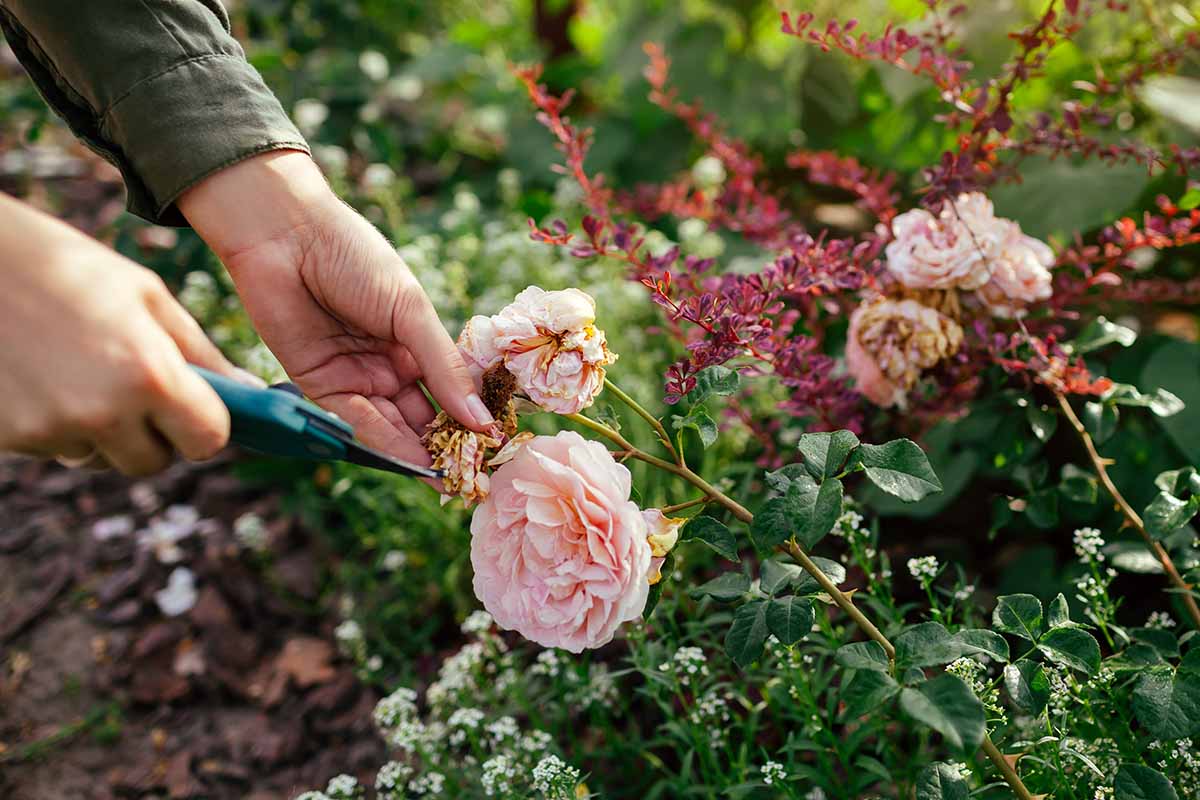
While a plant is blooming, it directs its energy toward its flowers. Even as those flowers die, they receive the bulk of a plant’s nutrients, in preparation for forming seeds.
Deadheading halts seed production and redirects the life force back into the stems and leaves. Cut stems on a 45-degree angle above an outward-facing bud eye or mature leaflet to promote the growth of sturdy stems and showy blossoms.
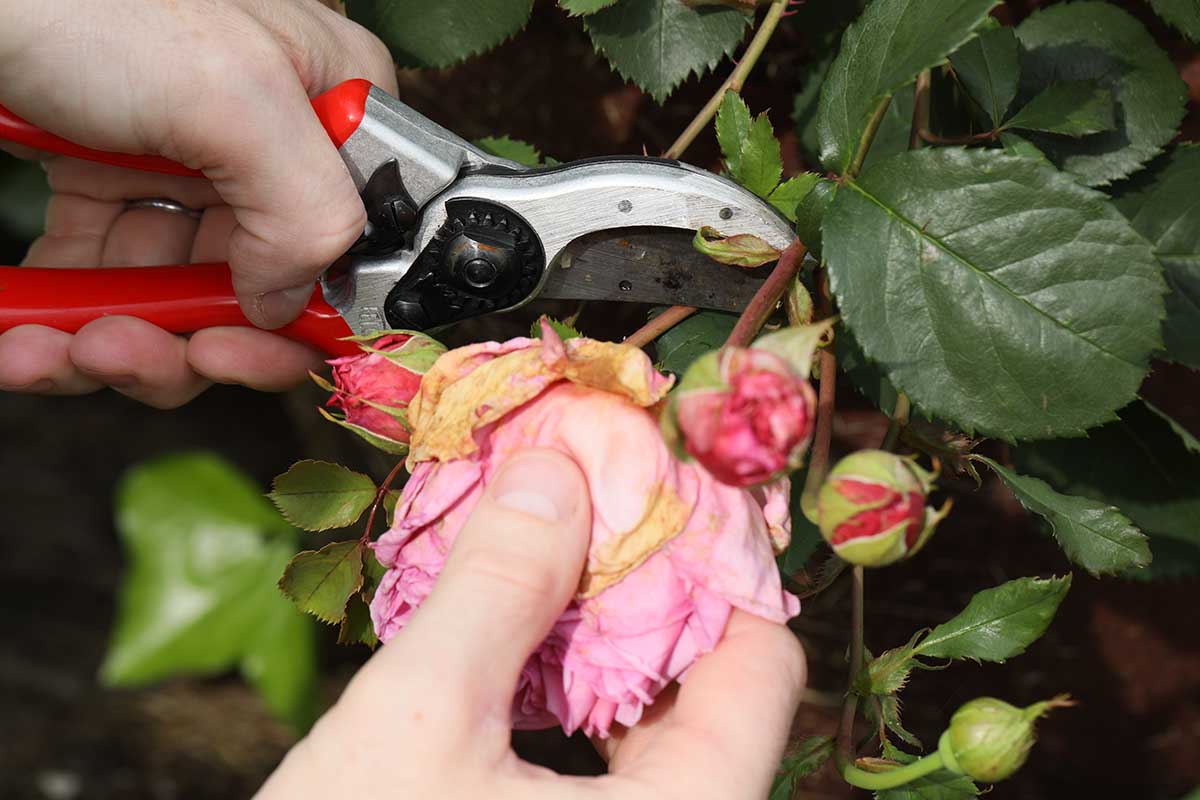
Some folks apply a thin coating of white craft glue to the cut tips of branches. This is a great way to ward off disease and insects that seek vulnerable tissue.
And if you really want to go the whole nine yards, sanitize your cutting tools in a solution of one part bleach to 10 parts water. Do this between plants, and after removing any diseased or infested material.
Read our full guide to deadheading roses here.
4. Manipulate the Blossoms
The flowering plant that has the fewest leaves and stems to nourish produces the largest blossoms.
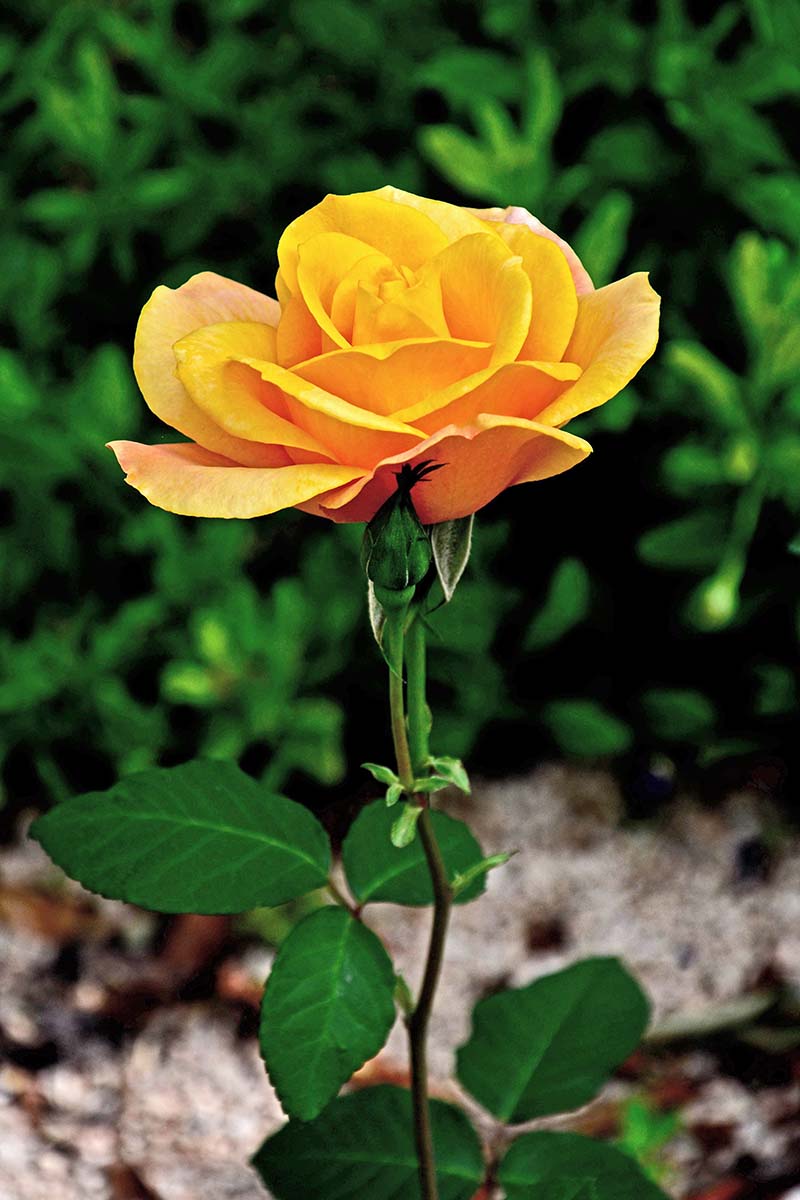
If you have a garden type rose bush, you may prune it down to about 12 inches, leaving about four to six main canes all leaning out from the center. This generally produces a plant that is small in stature with a few large blossoms.
Conversely, this same plant may be pruned to two feet tall with seven to 12 canes, for a taller bush with more leaves, and numerous – but smaller – flowers.
We said that shrub roses may be deadheaded to encourage blooming. In addition, by cutting stems on a 45-degree outward-facing angle four to six inches below the faded flower and a quarter-inch above a leaf node or leaflet, the plant will produce sturdy stems for new flower clusters.
If deadheading consists of simply pinching off spent blossoms at their base, new growth will be spindly, and flowers may hang their heads toward the ground.
5. Prune with Purpose!
Most gardeners say that the best time to do a major pruning is during the last phase of winter dormancy. But this is not a hard and fast rule.
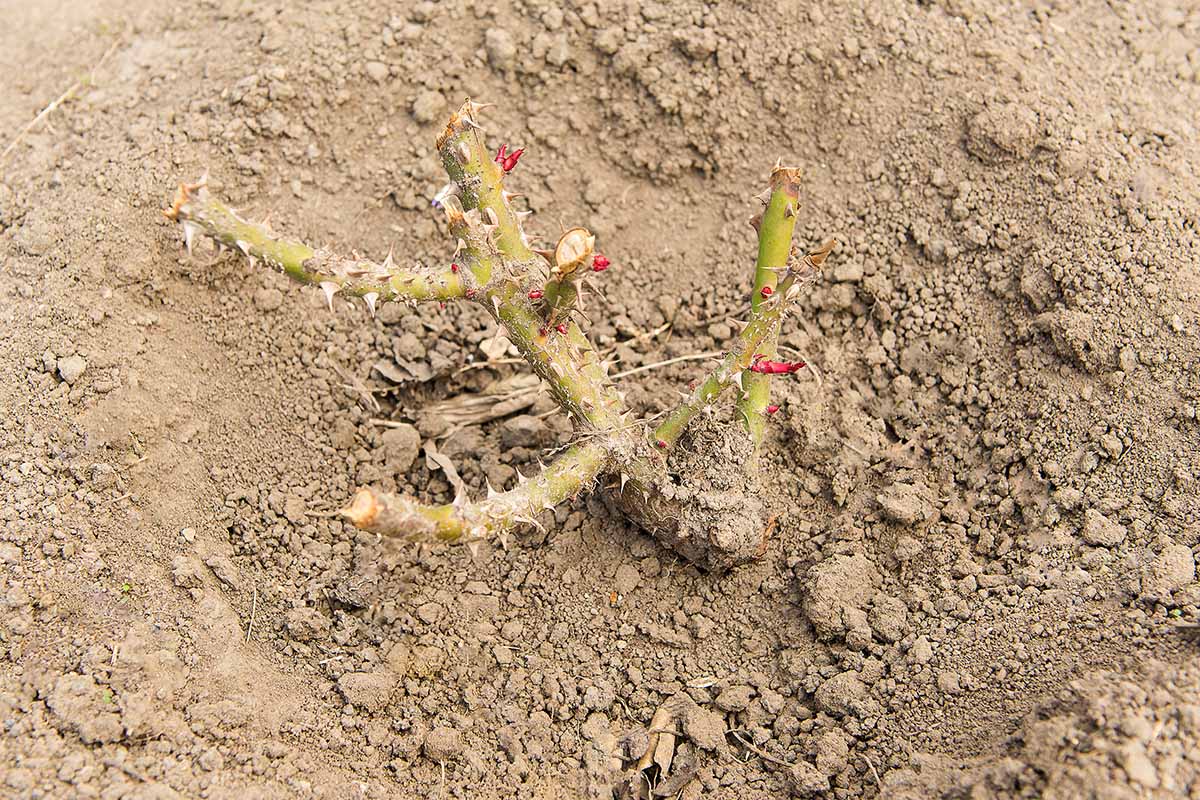
In cold climates, since it’s hard to predict the last frost, the appearance of forsythia is often used as a herald for the task.
This is the time to prune one-fourth to one-third of shrubs and garden bushes per the 45-degree angle technique, and follow the blossom manipulation instructions provided above in tips 1 and 4.
If you live where the weather is warm, you may prune as early as December. The idea is to do it when the plant is not actively producing new growth or blossoms.
Some people swear by fall pruning, and others discourage it. If you find it convenient to trim in autumn, wait until after the first frost, and hope it doesn’t warm up again. Frost-damaged shoots can lead to permanent cane damage.
Similarly, if your plants sprout in the spring and then you have a cold snap, you may have to trim per the instructions provided, to dispose of premature growth that has sprouted and withered.
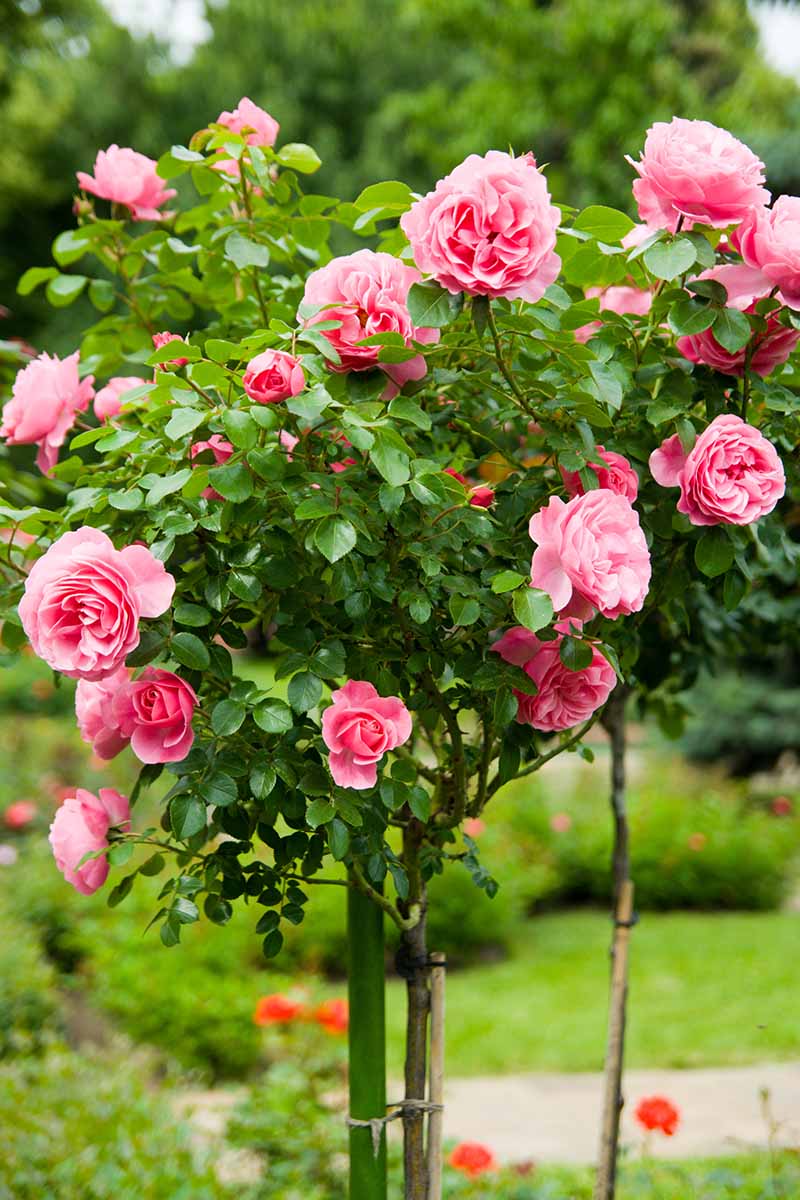
I do a lot of summer cutting on my own, deadheading, thinning the center, and bringing bouquets of flowers indoors. Every March I take off about one-fourth of the height.
Creepers, climbers, and ramblers may be trimmed to maintain shape, remove dead or damaged material, or deadhead.
Be sure to find the origin of a cane for cutting at its base, rather than snipping off the ends, to maintain sturdy canes throughout. Snipping ends may produce spindly stems and flowers that bow their heads.
And when you must trim a portion of a cane, cut as described, quarter of an inch above the largest leaf grouping you can find.
Miniature roses that are not in bloom may be trimmed back by one-third or one-fourth each year, and may require periodic attention for shaping purposes.
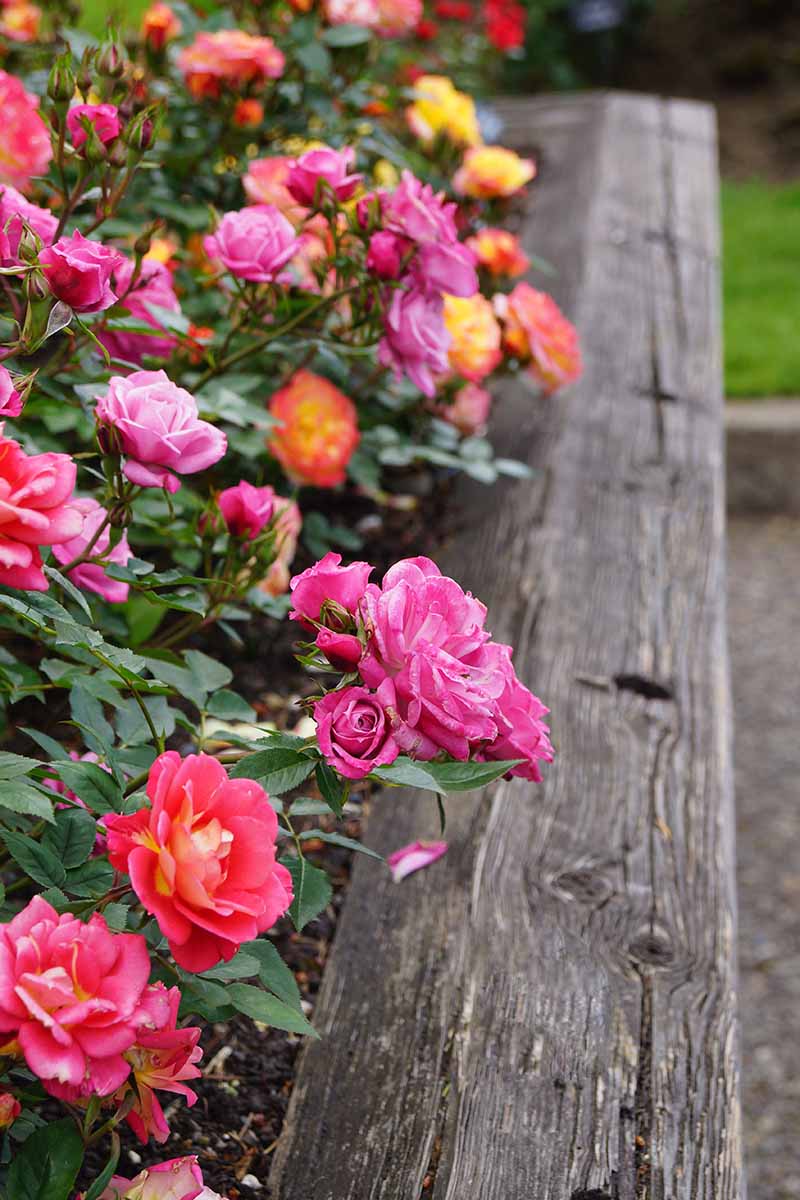
Grafted tree types and rose standards, as we said, are made of bushes, climbers, or ramblers. They require routine shaping.
To recap, general maintenance for all types involves deadheading, discarding diseased and infested material, disposing of dead wood, and deep pruning to rejuvenate and/or manipulate the bloom.
A final note: you may find canes that are green and alive, but have no leaves, buds, or flowers. These may have been damaged by adverse weather conditions and are of no use to the plant. They should be removed.
Just a Little Off the Top
Whether they’re creeping along a garden border, climbing over a pergola, or flanking an entrance, roses invoke a cottage garden ambiance that’s irresistible.

And as lovely as they are, they’re tough – so don’t be afraid if you give a bad haircut your first time out.
I can’t tell you how many times I have cut the wrong branch. But, like hair, branches grow back with gusto and give you another chance to get it right.
Now you’re ready to raise your shears with confidence! Keep a garden journal and take some photos to document your efforts. We love to hear from our readers. What pruning tips would you like to share? Tell us in the comments below.
And for more rose related guides, check out these next:

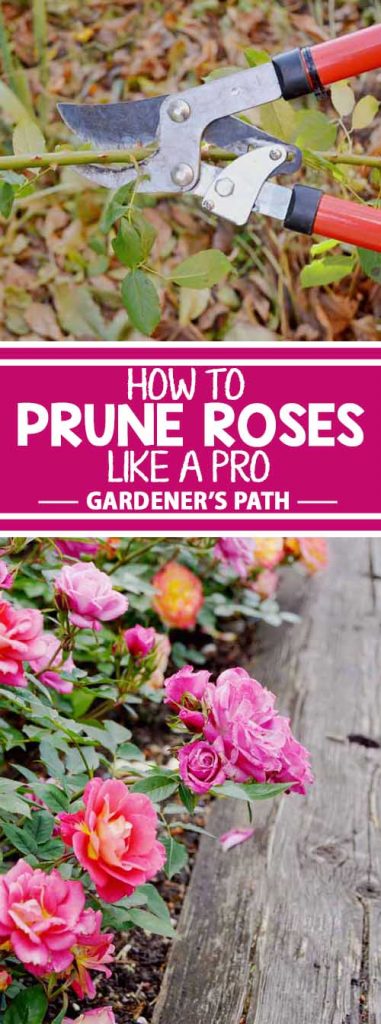
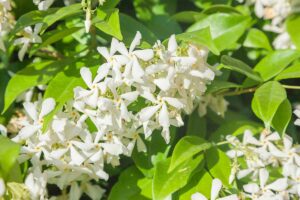
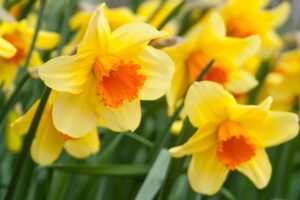

Need to know what to do with a rose bush that looks dormant …ordered it through the mail.
Hi Tirzahanna- The first thing to do with your new, dormant rose bush is to carefully unwrap the packing materials. If your rose bush is in a pot of soil, poke down into the soil to check for moisture. If it’s dry, water thoroughly. If your plant consists of bare roots with no soil, place it in a pan/bucket of lukewarm water and allow it to soak for an hour or so. Be very careful not to break the roots. Next, prepare the ground by digging a hole and working the soil until it is crumbly. The hole should be… Read more »
Thank you so much for your article. It really gives me information that I am looking for.
Thank you so much. I believe I’ve been properly pruning my roses. They are beautiful. I won’t pinch them off any more though.
Where can I buy a nice deep purple long stem rose for my walkway to join the other roses?
Hello Kevin –
You will find long-stemmed purple roses among the floribunas. Contact your local nursery for plants suited to your region.
I just recieved a standard rose can I cut to half as about 7ft
Cutting back by half this close to summer will probably result in little or no flowers for this year Clive. You’d be better to wait until winter dormancy for the plant to recover and send up a full season’s new growth.
I have white larvae on the back of my hydrangea leaves. I’ve sprayed, but to no avail. Suggestions?
Hi Cheri –
You may have an infestation of whitefly or scale. These are sap-sucking insects that feed on soft plant tissues. Their excretions create a breeding ground for sooty mildew, a fungus that turns leaves black. Your best course of action is to treat the hydrangea with a horticultural oil spray. Follow package instructions. Be sure to concentrate your efforts on the undersides of the leaves. It may take multiple applications to get rid of the insects. Best of luck, and thanks for reading.
I have 3 knockout rose bushes and they only get blooms on the top, not in the entire bush.What am i doing wrong? Also, what kind of plant food should i use? Thanks
Hi Carol – Knockout roses bloom on new growth, so if you prune too late in the spring, you’ll cut off the first buds of the season before they have a chance to bloom. After blooming, you can encourage more flower production by deadheading spent blossoms and preventing the formation of rose hips. I’ve noticed something interesting with my own Knockout roses. I prune with a hand pruner, removing unwanted stems at their base, to maintain an airy, natural look. I also deadhead. My neighbor prunes his with hedge clippers, for a dense, compact appearance. He does not deadhead. Mine… Read more »
I cut back my roses twice (I’m a beginner don’t shame me!) and now they won’t grow back. They are knockout roses. When will new buds come in since i cut back the buds too much?
Hi Peyton –
Never shame… oh, the mistakes I’ve made…if the plant has been shocked, it may take time. However, the best part about a Knockout rose is that it has several flushes of blooms from late spring through summer, and may have time to recover this season.
My rose had a horrible fungal problem, because of the weather I believe. I had to cut most of the leaves and some of the amount on each stem. Now only the tips are growing out. Did I damage it to no return, or is it something I can do. Most of the leaves had black spots and holes in the leaves. Thank you so much for your help.
Hi Donna – To minimize a buildup of moisture that may contribute to fungal growth, roses should be grown in full sun with plenty of air space between plants. Keep weeds and debris clear, and water at the soil level, rather than over the leaves. Black spot fungus may be treated by the removal of affected material and an application of commercial fungicide. When pruning damaged stems and leaves, cut back to the base of a cane, rather than snipping the ends off. This way, you’ll encourage sturdy, balanced growth. In addition, deeply prune the center of the plant to… Read more »
Thank you. I live in a shaded area. A lot of trees keeps me from planting roses. I do however have spots that get 6 hrs of sun. Is that enough to produce nice rose bushes?
Hi Debbie –
Six hours of continuous sunlight is best for roses. However, even an accumulated six hours through the day should yield success. In addition, some rugosa and floribunda varieties bloom well in partial shade. Visit your local nursery and explore options suitable for your landscape.
I am in southwestern Idaho. Our summer was cooler than normal and we have a frost warning for next week. Then in another week the temps will be back up to mid 60’s with night in the 40’s.
A few of my rose have nice buds, how much damage will incur if I pick them?
Others have new growth also, if that is removed will it help from drawing the cold down the stem?
Thanks for any suggestions.
Hello Susan –
Tender foliage, blossoms, and buds are vulnerable to frost damage. Cutting stems to bring inside and put into vases is a great way to keep from losing those beautiful buds. Alternatively, if your plants are small, you may want to simply pop a “rose cone” right over the top of each plant. This is a foam or fabric cover made to keep a plant warm during cold periods. If your plants are large, surrounding them with a layer of burlap tied with twine may just save those buds until it warms up again.
We moved into our house in late May. Since I was still in the process of retiring, I have not had time to tend to the massive beds and gardening the original owner left. The house was vacant about 6 months, and not well tended by the previous owner, not the original owner. So we inherited many different kinds of rose bushes that need rejuvenating. They were all blooming when we first moved in, but shortly after began to look like children left to dress themselves. The knock outs are too tall for me to prune down. I truly cannot… Read more »
Hello Kathy – Congratulations on your new home and retirement! Take a deep breath and prepare to take a step-by-step approach to gardening. Roses are truly a pleasure, once you gain the upper hand. The main goals of pruning are to foster optimal blooming, increase airflow and sunshine penetration, and minimize damage caused by branches rubbing together. A cane is a long, straight stem that originates at the bud union, the point above which are stems, and below, roots. Ideally, canes arch outward in a fan shape. Here is where pruning begins. It’s going to look quite drastic, but roses… Read more »
Thank you, you answered a majority of my questions. Now I’ll attempt to tackle my bushes…